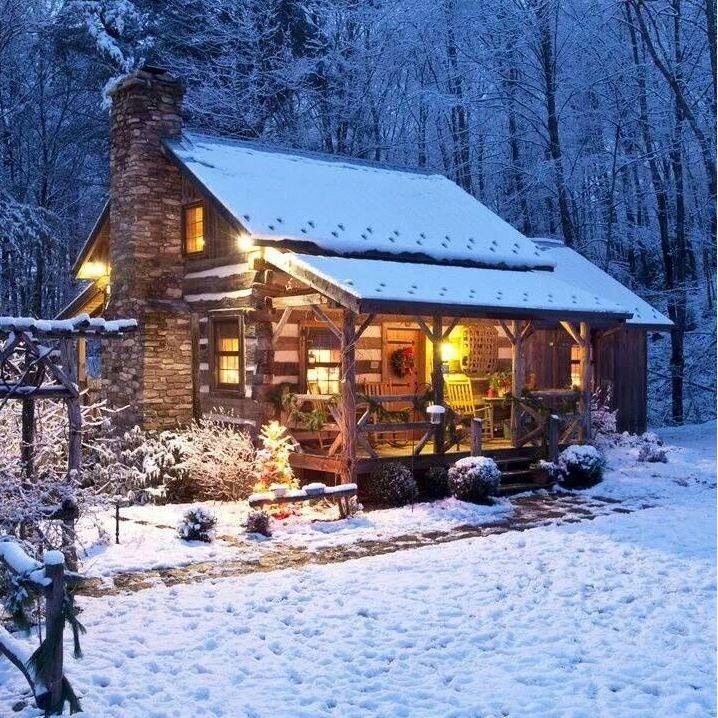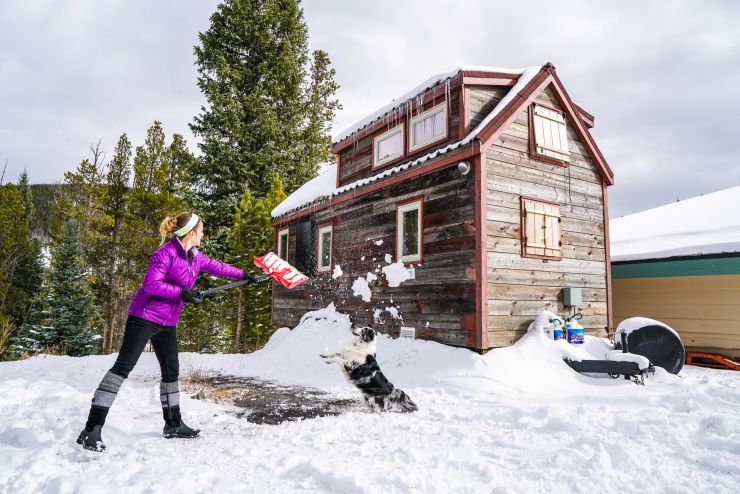WebStamp July 10, 2017
Tiny House Communities – Practicality
Tiny Houses are a great low-cost alternative way of living, with many wondering how practical would it actually be living in small dwellings in northern climates where winter weather dominates the majority of the year. Tiny House (TH) living is a new way of life reducing one’s needs ecologically, materialistically and financially while providing a simpler less stressful lifestyle. Today’s North American Society revolves around having much more than we need; bigger houses, bigger cars, bigger yards, with more personal belongings and gadgets. With all this oversized extra baggage comes additional burdens of wasting useful space for storage at higher costs. Not having to clutter up living space allows room for living comfortably.

Discussing Tiny Houses with my buddy Dwayne, he commented that he couldn’t live in a TH because he doesn’t like the idea of climbing up to and sleeping in a TH loft. I have seen many examples on HGTV where many of these small mobile dwellings have a bedroom on the main level. What Dwayne didn’t realize, is that he himself is living in a tiny house. He lives in one side of a 490 sq. ft. duplex in a condo community. Since house size is rated by the upper floor areas, his 2 bedrooms in the basement aren’t included with the size of his house. Even if we did include the basement area, according to Wikipedia a TH is under a 1000 sq. ft., and his home would definitely qualify at 980 sq. ft.
I myself lived comfortably in those condos for 7 years with my wife, and 2 adult kids. As a bi-level, the rooms in the basement had large bedroom windows providing plenty of light and allowed views that did not make you feel like you were in a basement. Upstairs seemed larger than it actually was due to the vaulted beam ceilings.
Share This Article
Going back to the ‘90s I lived quite comfortably with my girlfriend and a boarder in 600 sq. ft. There was a kitchen, living room and bathroom on the main floor, and upstairs in the loft a bedroom and a room big enough for a twin bed with a bit of tip-toe room. It wasn’t the size of the dwellings that mattered, but the functionality of the design using a small footprint. Reduced size means reduced costs, taxes, and maintenance with less worries.
Most people think of a tiny home as one on wheels, similar to a travel trailer, with a few more home like conveniences. Many TH are these types of structures, however, a TH could also be a permanent larger structure, similar to Dwayne’s condo. These types of THs provide the additional required space to be able to live comfortably indoors during the winter months. Even though it’s winter, there are plenty of outdoor activities one can enjoy in a city like Calgary when one needs to expand one's space.
Function and design are the elements used in creating a tiny home, as opposed to size as in today’s homes. Even though trailerable homes are small in size there are many unique ways to maximize on space. One example I saw was one area served multiple purposes as a bedroom at night, and with the Murphy bed folded up, a Yoga room with an office including a foldaway desk. Another unique feature, preventing cookie-cutter structures, is that most tiny homes are custom designed to suit the needs of the tenants.
It seems that tiny houses are practical in colder northern climates, the key is to insure proper design to comfortably accommodate the people living in it. One conversation I had with someone who lived tiny in a 400 sq. ft. apartment said she would like some outdoor space. A TH could provide that with some sort of deck attached, or on top, of the house. Structurally, they should be designed for northern climates to help insulate the occupants from the elements. Watch the Tiny House Movement Make A Difference and change the way we live with a less stressful life and enjoy more living.

References:
This article was written without any reference, other than the knowledge I have accumulated throughout my experiences and education in living in tiny houses, drafting, architecture, construction, and inventing.




